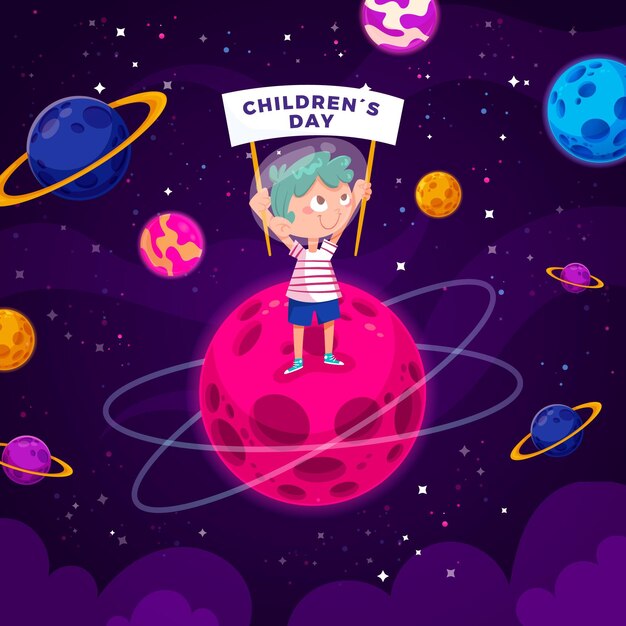Fascinating Facts about Venus for Kids

Venus is the second planet from the Sun.
Venus is often called the sister planet to Earth because they are similar in size.
Venus is named after the Roman goddess of love and beauty.
Venus is one of the brightest objects in our night sky.
Venus is a rocky planet, just like Earth.
Venus has a thick atmosphere made up of carbon dioxide, which causes a greenhouse effect.
The surface temperature on Venus is extremely hot, reaching up to 900 degrees Fahrenheit (475 degrees Celsius).
Venus has a very slow rotation, taking longer to rotate once than it does to orbit around the Sun.
Venus has no moons or natural satellites.
Venus is often referred to as Earth’s evil twin because of its harsh conditions.
Venus has many volcanoes, some of which are still active.
The tallest volcano on Venus, called Maat Mons, is over 8 miles (13 kilometers) high.
Venus has a thick layer of clouds that are mostly made up of sulfuric acid.
The dense atmosphere on Venus creates a pressure 92 times greater than Earth’s atmosphere.
Venus has no liquid water on its surface because the high temperatures cause it to evaporate quickly.
Venus has a retrograde rotation, meaning it spins in the opposite direction of most other planets in our solar system.
Venus has been visited by several spacecraft, including the Venera and Magellan missions.
Venus has a thin, rocky crust that is estimated to be about 30 kilometers thick.
Fascinating Facts about Venus for Kids part 2
The surface of Venus is covered in volcanic plains, mountains, and canyons.
Venus has the longest lava flows in our solar system, with some reaching over 300 kilometers in length.
A Venusian year is equivalent to 225 Earth days, while a Venusian day is equivalent to 243 Earth days.
Venus has a weak magnetic field compared to Earth’s strong magnetic field.
Venus has a unique atmospheric phenomenon called the Venusian bow or Venusian ring.
Venus is often seen as a bright morning star or evening star in our sky.
Venus is similar in size and mass to Earth, but it has a much thicker atmosphere.
The dense atmosphere of Venus causes a runaway greenhouse effect, making it the hottest planet in our solar system.
Venus has been a subject of fascination for astronomers and poets throughout history.
Venus is covered in many impact craters, indicating a long history of meteorite collisions.
There is no evidence of plate tectonics or continental drift on Venus.
Venus has a high number of coronae- large circular structures believed to be formed by volcanic activity.
Venusian clouds are composed mainly of sulfur dioxide and sulfuric acid, making the atmosphere highly acidic.
Venus has unique atmospheric waves called gravity waves, which are not well understood by scientists.
Venus has a relatively young surface, with some regions believed to be only a few hundred thousand years old.
Venus experiences retrogradation, meaning it appears to reverse its motion in the sky during certain periods.
Venus has an atmospheric pressure over 90 times greater than Earth’s, making it inhospitable to human life.
Due to its thick atmosphere, Venus has extreme wind speeds that can reach up to 250 miles per hour (400 kilometers per hour).
Venus has a thick layer of clouds that reflect about 65% of the sunlight it receives, making it very bright.
Venus is often called the evening star when it is visible after sunset, and the morning star when it is visible before sunrise.
Venus has a highly elliptical orbit, meaning its distance from the Sun varies significantly throughout its orbit.
Venus has been depicted in various mythologies and artworks, symbolizing beauty, femininity, and love.
Venus has been a target of potential future missions, including plans to study its atmosphere and search for signs of past or present life.
Venus experiences occasional transits, where it passes directly between Earth and the Sun, visible as a black dot on the Sun’s surface.
Venus has a unique double vortex at its north and south poles, similar to hurricanes on Earth, but much larger in size.
Venusian clouds are mostly composed of highly reflective sulfuric acid droplets, contributing to its bright appearance in our sky.
Venus has a unique Venusian crustal plateaus region, where large flat structures resembling continents on Earth can be found.

